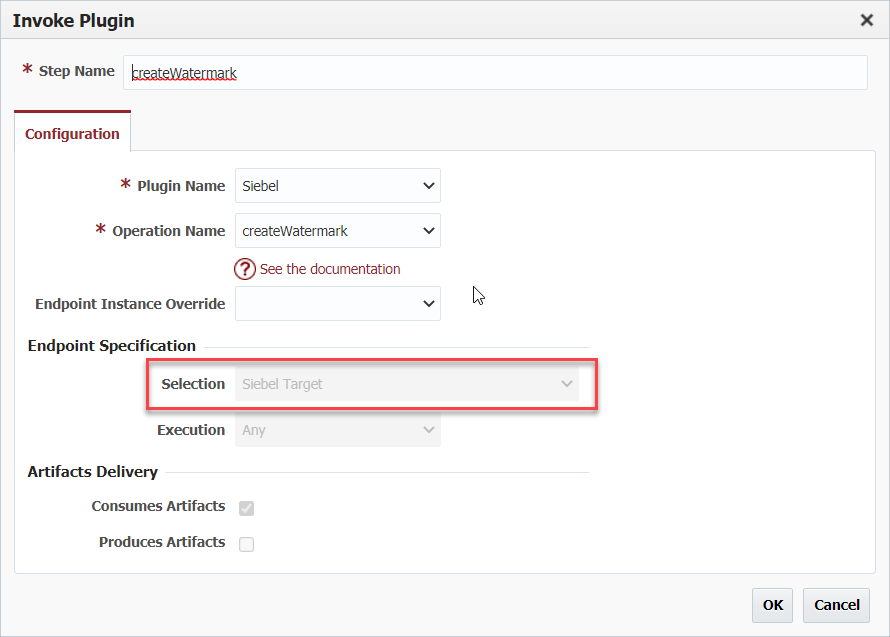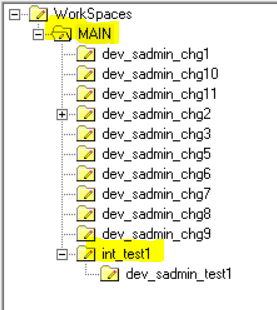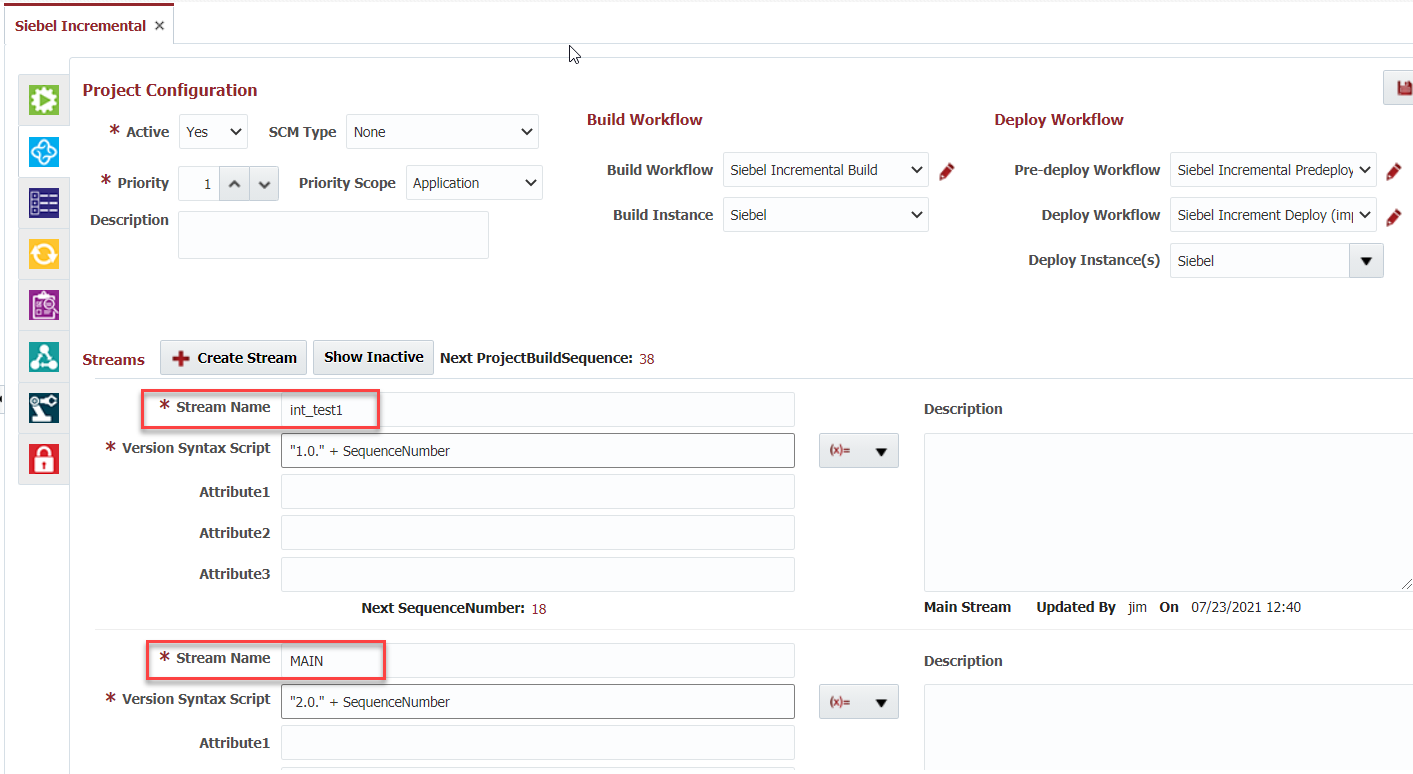FlexDeploy - Siebel Plugin Guide
The FlexDeploy Siebel plugin makes it easy to migrate Siebel repository objects from one environment to another. Migrations can utilize either a full Siebel repository migration or incremental migrations. This migration provides the same flexibility as the Siebel Migration Tool, enabling automation through FlexDeploy workflows and pipelines. This provides the added value of being able to incorporate the migration of Siebel objects with other projects of different technologies in the same release.
Supported Versions
- Siebel 17 or higher
Key Features
- Leverages incremental repository change migrations by using Siebel Watermark file technology
- Leverages full repository migrations to aid in synchronizing environments
Plugin Operations
Workflow Considerations
This plugin provides several operations to enable both full repository migrations, as well as incremental repository migrations. The following table identifies the plugin operations and the endpoint in which they will be executed on.
| Workflow Step/plugin operation | Endpoint Selection |
|---|---|
| siebelBuild | Siebel Source |
| createWatermark | Siebel Target |
| siebelExport | Siebel Source |
| siebelImport | Siebel Target |
Pre-deploy workflows
A Pre-deploy workflow can be utilized in cases where the content that was exported from the source Siebel needs to be validated prior to importing that to the next environment. The Pre-deploy workflow must copy the zip file to target servers Siebel File system or target location.
Endpoint Selection
When adding plugin operations to the workflow, select the resource type (Siebel Source or Siebel Target) to identify the type of resource that the step should execute on.
When the endpoints are mapped to the environment/instance in topology they will be identified as either a source or a target. The workflow step assigned to this resource type will be the endpoint that this workflow step executes on.
Primary Use Cases
- Initial migration of full repository to enable future incremental migrations
- Use build / deploy workflows utilizing the Siebel plugin operations with the full export type
- Select inputs to include the object types to be migrated as part of the full migration
- Migrate delivered changes using Siebel incremental migrations
- Use build / deploy workflows utilizing the Siebel plugin operations with the incremental export type
- Select inputs to include the object types to be migrated as part of the full migration
- Migrate delivered changes using Siebel incremental migrations and review export results prior to importing
- Use build / pre-deploy / deploy workflows utilizing the Siebel plugin operations
- Pre-deploy workflow would contain the steps to create the watermark file and generate the zip file from the export
- An additional step to copy the zip file to the target server would also need to be included in the pre-deploy workflow
- Output of the export can be reviewed prior to running the deploy step to import to the target environment
- Select inputs to include the object types to be migrated as part of the full migration
- Migrate delivered changes using Siebel full migrations
- Use build / deploy workflows utilizing the Siebel plugin operations with the full export type
- Select inputs to include the object types to be migrated as part of the full migration
Sample Workflows
Siebel Build - Use to perform build operation for the Incremental or Full Repository migration.
- Includes the siebelBuild operation from the Siebel plugin.
- Sample XML source: Siebel Build.xml
- Required input is the Siebel workspace version and export type. Export type is used to determine what type of export to perform and the available options are:
- full
- incremental
- Additionally, the match the options available in the Siebel Migration Application, there are several check boxes available to allow for the selection of what types of objects to migrate:
- Include Schema Service
- Include Application Workspace Data Service
- If export type is full, then the migration plan will use Application Workspace Data Service option
- If export type is incremental, then the migration plan will use Incremental Application Workspace Data Service option
- Include Runtime Repository Data Service
- If export type is full, then the migration plan will use Runtime Repository Data Service option
- If export type is incremental, then the migration plan will use Incremental Runtime Repository Data Service option
- Include Application Data Service
- Include Application Data Service with Transformation
- Include File Prepare and Deploy
- Include FINS BIB
- This should execute on the Siebel Source end point because if Initial export type is selected an export is executed.
Siebel Deploy - Use to perform the create watermark on the target, incremental repository export on the source, and incremental repository import on the target.
- Includes the createWatermark, siebelincrementalExport, and siebelIncrementalImport operations from the Siebel plugin.
- Sample XML source: Siebel Deploy.xml
- No inputs are required
- Recommended that the create Watermark step is executed on the Siebel Target endpoint
- Recommended that the Incremental Export run on the Siebel Source endpoint
Recommended that the Incremental Import run on the Siebel Target endpoint
Tips
For all operations, it is recommended that the operation be executed on the end point type indicated because the Siebel Migration tool is expecting the watermark or zip file to be in a specific directory. Normally, that is the Siebel File Systems migration directory but can be whatever directory is configured for the Siebel Migration tool. The only case where the endpoint does not need to be Siebel server is in a case where the file system used by the FlexDeploy plugin operation and the Siebel Migration tool are shared across both the plugin's endpoint and the server running the Siebel Migration tool.
The Siebel workspace and child workspaces must be in a delivered status (using Siebel Tools or Siebel Web Tools) before the build/deploy process will migrate the Siebel objects.
Project setup considerations
When setting up the project configuration, the SCM Type is set to none but the stream name will still be utilized. The stream name will correspond to the WorkSpace branch name of either the main branch or integration workspace within Siebel Tools.
Example:
In Siebel Tools, there is the MAIN workspace and an integration workspace called int_test1:
In FlexDeploy, the associated stream names would be added:
Depending on which stream name and workspace version is selected on the Build operation, will determine which branch/workspace and workspace version are migrated.
Related content
- style



